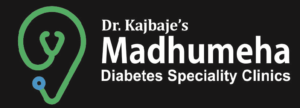Stretch It Out: Discover the Science Behind Stretching for Improved Flexibility and Injury Prevention
Whether you’re a seasoned athlete, an avid yogi, or someone who spends most days nestled in an office chair, the importance of stretching cannot be overstated. Often overlooked in favor of more dynamic workout routines, the art and science of stretching hold the key to enhancing flexibility, preventing injuries, and even improving overall well-being. In this comprehensive guide, we’ll dive into the nitty-gritty of stretching properly—with a dash of science, a sprinkle of technique, and heaps of practical advice to incorporate into your daily life.
The Basics of Stretching: What You Need to Know
Before we jump right into the deep end, let’s start with a little Stretching 101. At its core, stretching is about lengthening your muscles and tendons, which helps increase your flexibility and range of motion. Two main types of stretching come into play: dynamic stretching and static stretching.
- Dynamic stretching involves moving parts of your body and gradually increasing reach, speed of movement, or both. It’s about getting your body ready for the action ahead.
- Static stretching, on the other hand, requires holding a stretch in a challenging but comfortable position for a period of time, usually between 15 to 60 seconds.
Now, why is this important, you ask? Well, incorporating both types of stretches into your regimen can significantly reduce your risk of injuries and improve your performance in physical activities. Plus, it feels pretty fantastic.
Why Stretching Should Be Your New Best Friend
Let’s dive a bit deeper into the benefits. It’s not just about touching your toes without wincing—stretching has some serious perks:
- Increases Flexibility: Regular stretching can help increase your flexibility, which is crucial for your overall health. Flexibility enhances your ability to perform everyday activities with ease and leads to better physical performance.
- Prevents Injuries: Stretching the right way can help prevent injuries by preparing your muscles for the work they’re about to do. It helps in maintaining a good range of motion and decreases the resistance on your muscles during various activities.
- Improves Posture and Balance: Stretching is also beneficial for improving posture and balance, which can diminish over time due to age, sedentary lifestyle, or overuse of muscles in one particular direction.
- Stress Relief: Yes, stretching can also be a form of relaxation for your mind and body. It can be particularly effective for release and stress relief, as it relaxes tense muscles that often accompany stress.
How to Stretch Properly: Techniques and Tips
Now that you’re convinced about the why let’s talk about the how. Proper technique is key to getting all the stretching benefits without any of the downsides (like injuries).
Getting Started
- Warm-Up: Never stretch cold muscles. It’s like trying to stretch cold dough—it doesn’t work well, and you’ll likely just end up tearing it. Spend some time warming up with light walking, jogging, or cycling at a low intensity for 5-10 minutes.
- Focus on Major Muscle Groups: Concentrate on your calves, thighs, hips, lower back, neck, and shoulders. Make sure to stretch both sides equally.
The Art of Dynamic Stretching
- Use dynamic stretches as part of your warm-up routine. These can include leg swings, arm circles, and torso twists. Such movements mimic the activity you’re about to do but in a controlled manner. This prepares your body for the physical exertion ahead.
Mastering Static Stretching
- Save static stretching for after your workouts when your muscles are warm and more elastic. This is the time to deepen your stretch, hold each stretch for about 30 to 60 seconds, and breathe deeply.
- No Pain, Just Gain: If it hurts, you’re doing it wrong. Stretching should never be painful. While you should feel a stretch, if you feel pain, back off to the point where it doesn’t hurt and hold there.
Stretching Mistakes to Avoid
Now for some common pitfalls to steer clear of:
- Skipping the Warm-Up: Jumping straight into static stretching without warming up can lead to muscle strains.
- Overdoing It: Stretching should not be a competition. Listen to your body and only go as far as it allows.
- Forgetting to Breathe: Remember to breathe normally during your stretches. Holding your breath tightens your muscles, counteracting the stretch’s benefits.
- Not Stretching Regularly: Sporadic stretching won’t cut it. Incorporate it into your daily routine for the best results.
Stretching Routines for Every Lifestyle
Whether you’re glued to a desk all day or pounding the pavement, there’s a stretching routine that’s right for you. Here are a few ideas to get started:
- For the Desk Dwellers: Focus on neck, shoulder, and lower back stretches. Try shoulder shrugs, neck tilts, and seated spinal twists to combat the stiffness that comes from sitting.
- For the Runners: Your legs are your lifelines. Don’t forget to stretch your hamstrings, quadriceps, calves, and hip flexors. Leg swings and calf raises are great pre-run, while static stretches can cool you down.
- For the Weight Lifters: Arms, shoulders, and chest stretches are crucial. Incorporate dynamic arm swings before lifting and static holds after your session to keep your muscles supple.
Final Thoughts: The Long Stretch Ahead
Stretching, when done correctly and consistently, can be a game-changer for anyone looking to improve their flexibility, prevent injuries, and enhance their overall well-being. By weaving both dynamic and static stretching into your daily routine, you’re not just preparing your body for the physical demands of life; you’re also unlocking a greater range of motion, improved balance, and a sense of mental and physical relaxation.
So, why not take a little time each day to stretch it out? Your body (and mind) will thank you. Remember, the key to reaping the full benefits of stretching lies in the consistency and proper technique—so stretch smart, stretch safe, and keep moving forward.
